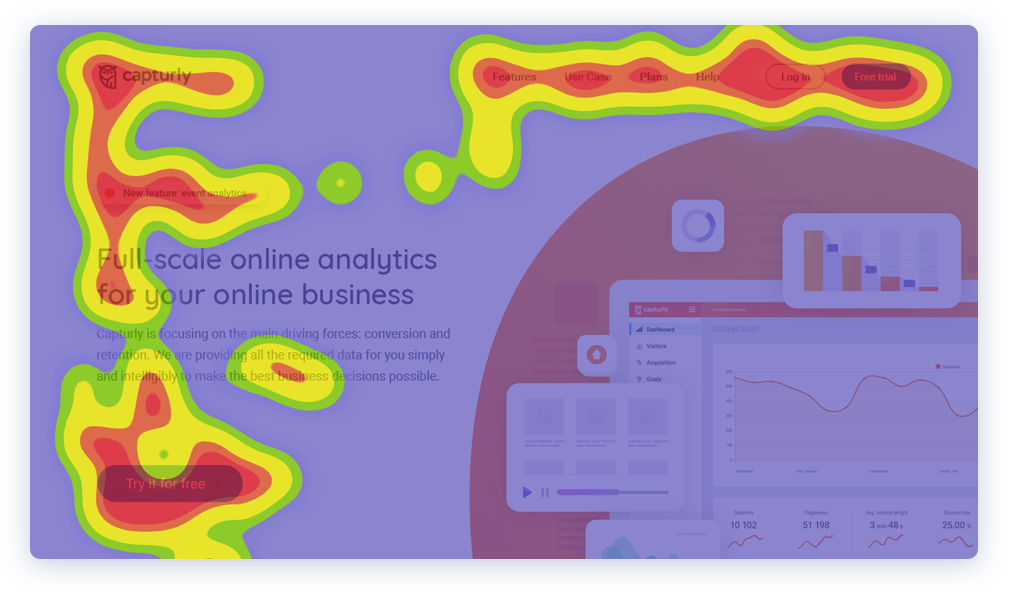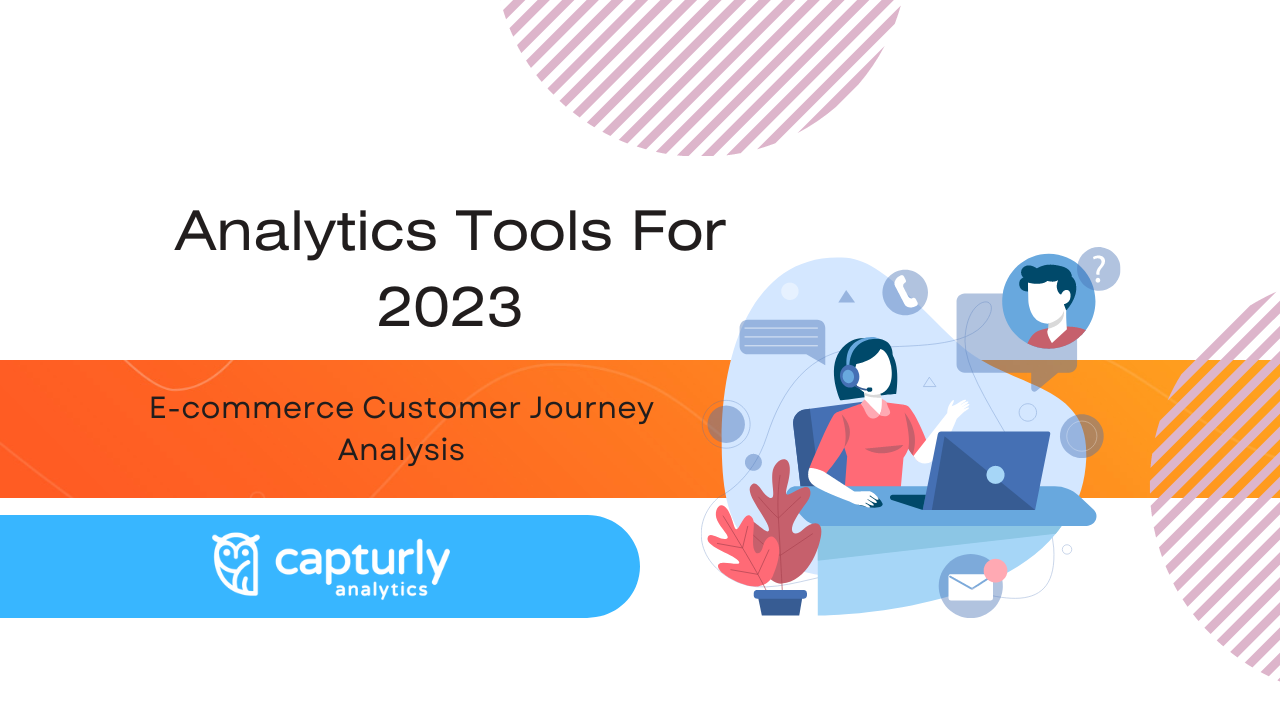The e-commerce customer journey is a crucial aspect of online sales and success. Understanding the various stages a customer goes through before making a purchase, from awareness to advocacy, can provide valuable insights into their behaviour and preferences.
With the right analytics tools, businesses can track and analyze customer interactions, gather data, and make informed decisions to improve the customer experience and drive sales. In 2023, several powerful analytics tools will be available to help e-commerce companies better understand their customer journeys.
This blog will explore the e-commerce customer journey and the top analytics tools for analyzing it in the coming year.
Table of Contents
What Are the Stages of the E-commerce Customer Journey?
The e-commerce customer journey refers to the various stages a customer goes through, from becoming aware of a product or service to becoming a loyal advocate. These stages can include:
- Awareness
In the awareness stage, customers become familiar with a product or service through various channels such as advertising, search engines, social media, or word of mouth. During this stage, the focus should be on building brand recognition and creating a positive first impression.
This can be achieved through targeted advertising campaigns, search engine optimization (SEO), and influencer marketing.
- Consideration
The consideration stage is where customers start researching and comparing products and services to determine which best meets their needs. They may read reviews, compare prices, and look for recommendations.
During this stage, it’s important to provide helpful and easily accessible information about the product or service, such as detailed product descriptions, specifications, and customer reviews.
- Acquisition
The conversion stage is when the customer makes a purchase and completes the transaction. During this stage, the focus should be on making the buying process as seamless and user-friendly as possible.
This can be achieved through a well-designed website, clear call-to-actions, and a physical security checkout process.
- Service
This stage is crucial in building customer loyalty and encouraging repeat purchases. During this stage, the focus should be on providing excellent customer service and ensuring customer satisfaction.
This can be achieved through responsive customer support, personalized email campaigns, and ongoing engagement with the customer.
- Loyalty
By nurturing a solid customer relationship, e-commerce businesses can increase brand recognition, drive sales, and build a loyal customer base.
During this stage, the focus should be on maintaining the relationship with the customer and encouraging them to continue to engage with the brand.
This can be achieved through loyalty programs, referral campaigns, and personalized experiences.
Analytics Tools for Understanding the Customer Journey
Analytics tools are essential in understanding the e-commerce customer journey and identifying areas for improvement. This section will discuss some of the top analytics tools for analyzing the customer journey in 2023.
1. Capturly Analytics
Capturly is a web analytics and user behavior analysis service that helps website owners understand visits and user behavior on their site. The service allows site owners to observe user clicks, scrolling patterns, customer journey, and other useful information that can help optimize the site and improve the user experience. New customers should know that Capturly enables them to easily review their website’s performance and identify which improvements to make in order to increase the site’s conversion rates and efficiency.

These tools include click tracking, heatmaps, session recordings, conversion funnels, form analytics, and A/B testing
2. Taggbox Analytics
Taggbox is a feature-rich dynamic platform with a robust analytics feature giving detailed insights to help improve future campaigns. You can run analytics around sentiment analysis of how users behave with your campaign around User-Generated Content (UGC).
This way, you know more about what changes or improvements can be made in the current strategy to get better results in the next campaign.
Moreover, you learn about your top influencers and most active creators. You can then highlight them to encourage more people to invest in your campaign or share better UGC marketing strategy. These analytics show how many people with a huge follower base are following you and using your hashtag or publishing posts around your brand.
Knowing about your active creators shows how many people share your content the most throughout social media, regardless of their following. All these details can help you achieve more and seamlessly dive into the realm of success.
3. Google Analytics
Google Analytics is a free, widely used tool that provides detailed insights into website traffic and customer behaviour. It can track and measure customer interactions, such as page views, click-throughs, and conversion rates.
4. Adobe Analytics
Adobe Analytics is a comprehensive solution that provides deep insights into customer behaviour and interactions. It can track and analyze customer journeys across multiple devices and channels, providing a complete view of the customer experience.
5. Piwik Pro
It is an open-source analytics platform that provides detailed insights into website traffic and customer behaviour. It can track and measure customer interactions, such as page views, click-throughs, and conversion rates.
6. Heap
Heap is a cloud-based analytics platform that provides e-commerce businesses insights into customer behaviour and website performance. It offers a range of features, including heat maps, funnels, user flow reports, and session replay, to help businesses understand the customer journey and identify pain points.
7. MixPanel
Mixpanel is a customer analytics platform that provides e-commerce businesses insights into customer behaviour and engagement. It offers a range of features, including funnels, user flow reports, and event tracking, to help businesses understand the customer journey and identify pain points.
Case Studies where analytics helped brands do more
These examples highlight the importance of customer journey analysis for e-commerce businesses and demonstrate how data-driven insights can lead to improved customer satisfaction and business success.
- Nike
The sportswear giant uses customer journey analysis to gain insights into customer behaviour and preferences. By tracking customer interactions across all touchpoints, Nike can understand what drives customers to purchase and causes them to abandon the process. This information is used to optimize the customer experience and drive sales..
- Zappos
The online footwear retailer uses customer journey analysis to understand the customer experience and identify pain points. By tracking customer interactions, Zappos can see where customers are encountering friction in the customer journey and make data-driven improvements to reduce friction and increase conversions.
- Walmart
The retail giant uses customer journey analysis to understand customer behaviour and optimize the online shopping experience. Walmart uses data and analytics to track customer interactions and identify trends, then makes data-driven improvements to the customer journey to drive sales and improve customer satisfaction.
- Airbnb
The vacation rental platform uses customer journey analysis to understand the customer experience and identify pain points. Airbnb uses data and analytics to track customer interactions and then extract data-driven analytics of the customer journey to improve the customer experience and drive bookings.
- Target
The retail giant uses customer journey analysis to understand the customer experience and identify pain points. Target uses data and analytics to track the interactions their customers made with them and then makes data-driven improvements to the customer journey to improve the customer experience and drive sales.
Final Words
Analytics play a critical role in understanding the e-commerce customer journey. By analyzing customer behaviour and website performance, e-commerce businesses can gain a deeper understanding of the customer experience and identify pain points.
This information can then be used to make data-driven improvements to reduce friction and increase conversions, improving customer satisfaction and business success.
Don't forget, sharing is caring! :)


4 Comments
APIs Travel
2023-03-15 at 08:19This information is very helpful. thank you for sharing. Keep Posting.
Jason Hood
2023-05-24 at 06:06Understanding the customer journey is crucial for online businesses to enhance the overall shopping experience and drive sales. The article does an excellent job of breaking down the various stages of the customer journey, from awareness to loyalty, and highlights the importance of each stage. By leveraging these tools and analyzing customer behavior, businesses can make data-driven improvements that lead to better customer satisfaction and overall success. Thank you for sharing these!
geometry dash lite
2023-12-25 at 03:58Effective tool when analyzing consumer needs. Easily search for more keywords and implementations. This provides great support in the process of building and developing strategies.
geometry dash lite
2024-01-02 at 05:27From awareness to loyalty, the essay does a great job of delineating the various stages of the customer experience and emphasizing the significance of each one.